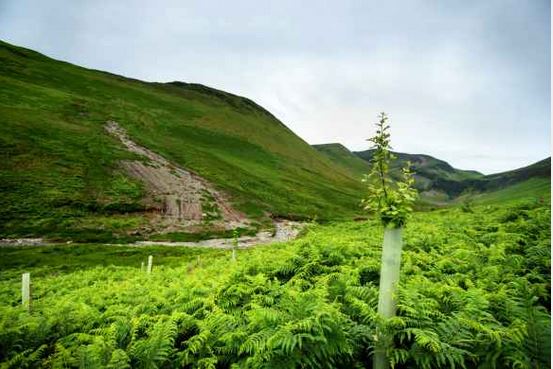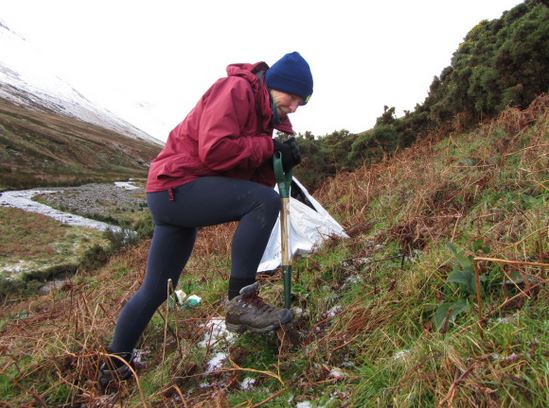Hundreds of trees were planted across the Lake District Friday,February 10th in the first mass tree planting event ever attempted by the National Trust in the national park.
The trees will help reduce the impacts of future flooding and restore wood pasture habitats that have been lost, National Trust rangers say.
More than 90 people will plant a total of 1,400 trees at five sites in the Lake District National Park, including the shores of Lake Windermere and the approach to Scafell Pike, England’s highest mountain.

Saplings planted in the shadow of flood damage in the Coledale valley, near Keswick. Credit: John Malley / National Trust
As they mature, it is expected that the trees will help to trap rainwater and mitigate the effects of flooding. In late 2015 Storm Desmond brought record rainfall to parts of the Lake District, with 34.1cm of rain falling on Honister Pass, Borrowdale, over just 24 hours. Storm Desmond left the National Trust facing a £1million clean-up bill.
Mike Innerdale, assistant director of operations for the National Trust, said: “This is a real community effort, with dozens of volunteers helping to plant trees – restoring important wood pasture habitats and slow the flow of storm water off the fells.
“The Lake District is visited by millions of people every year. But the recent floods show just how fragile a landscape it is.
“The 2015 floods caused millions of pounds worth of damage, leaving scars on the landscape that are yet to heal.
“With major storms occurring more frequently, we’re working with farmers and local residents to look at ways of making the Lakes more resilient to flooding.”
At Braithwaite, near Keswick, rangers, residents and volunteers from the Woodland Trust will plant 500 native broadleaf trees over two hectares of pasture in the Coledale valley. In 2015 flooding caused a major landslide in the valley that lead to the village of Braithwaite being inundated with silt, boulders and other debris.
Emily Brooks, who lives in Braithwaite, said: “I’m really pleased to be planting trees above Braithwaite to help to reduce the impact that extreme rainfall has had on our village. It feels like important work now, to better protect our homes from future flooding.”
By planting the trees, Rangers and volunteers plan to restore areas of ancient woodland, create wood pasture and plant new hedgerows. These will offer a welcome home for birds like warblers, flycatchers and redstarts.
All of the 1,400 saplings that will be planted are native woodland species, including oak, birch, hazel, rowan and crab apple.




